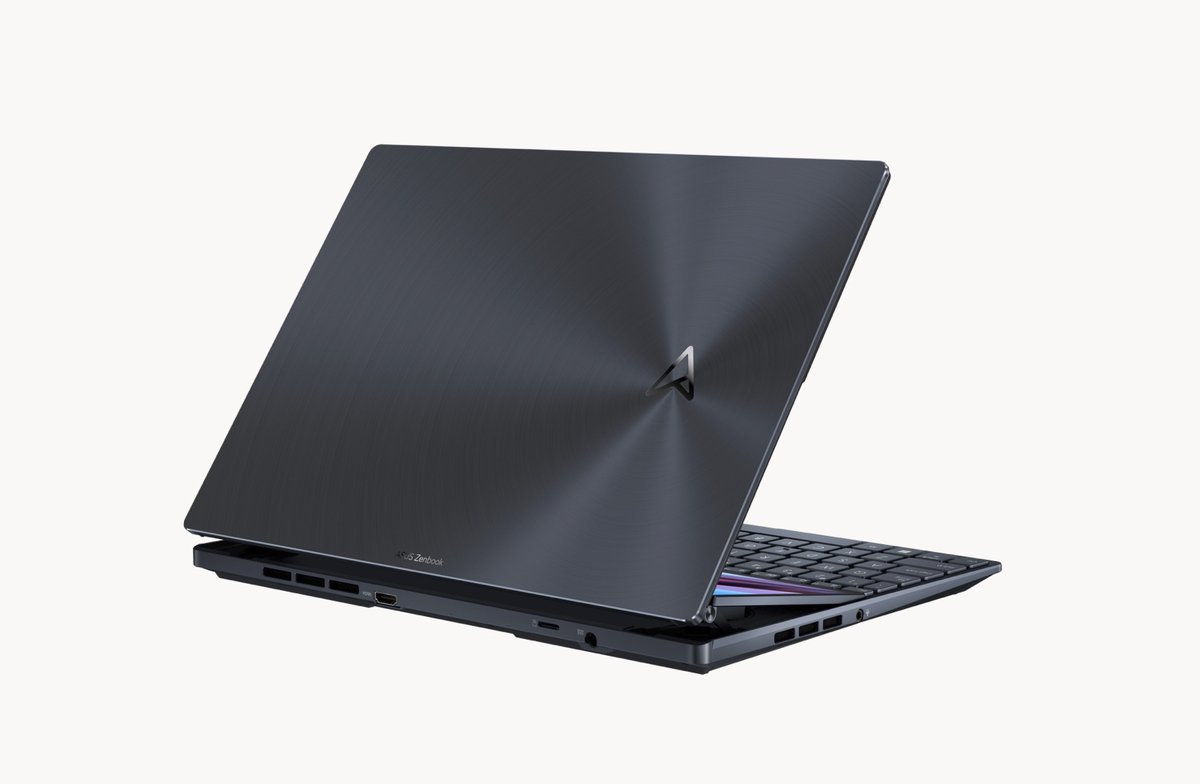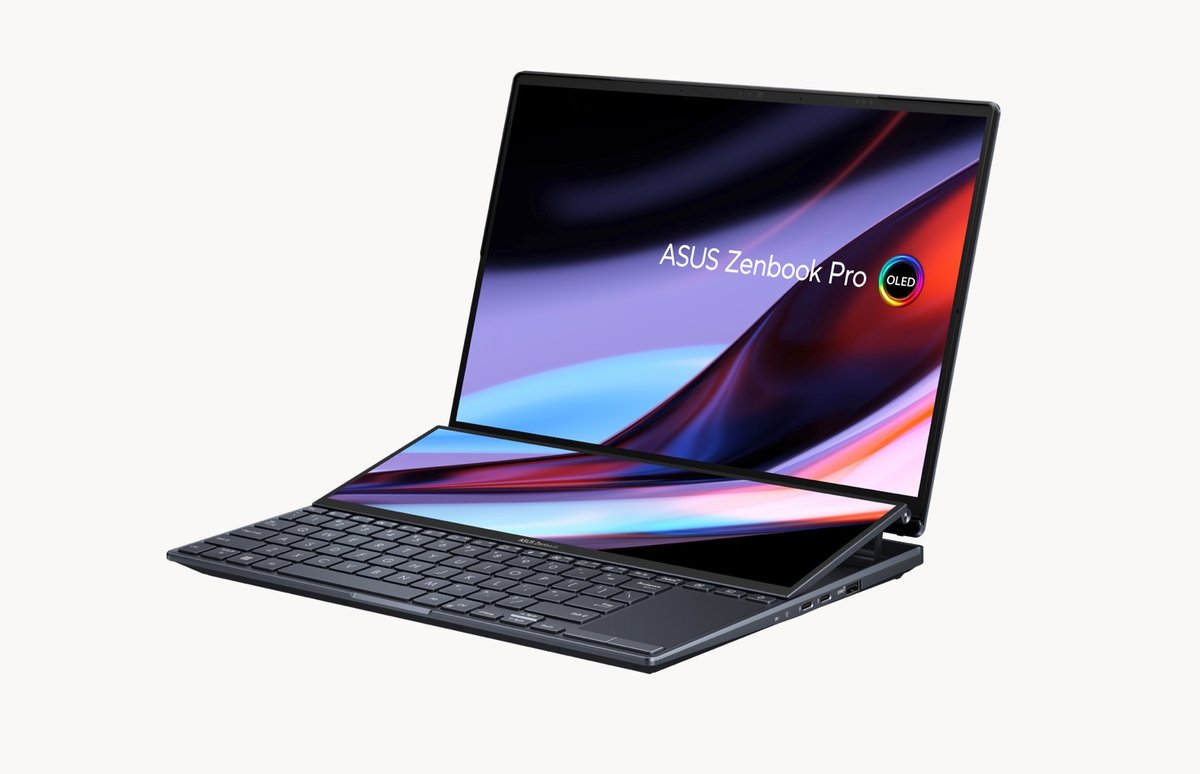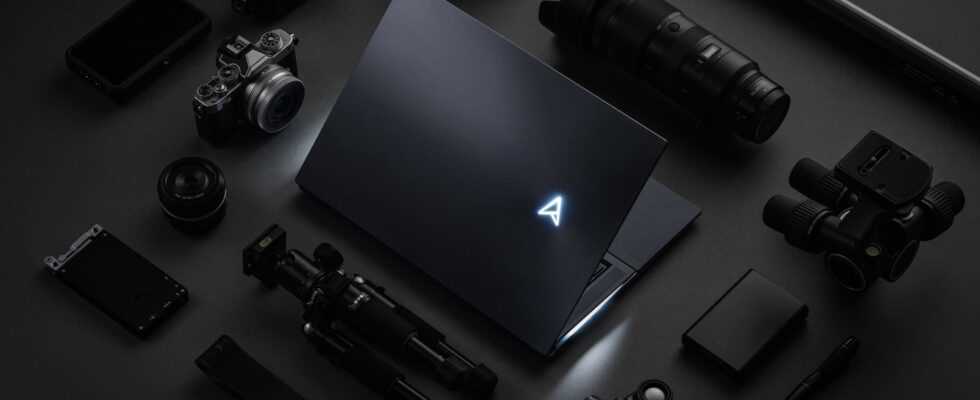ASUS is taking advantage of the spring to refine its creative offer a little more. Without skimping on the means, the Taiwanese manufacturer presents us at the beginning of May with innovative ZenBook Pro 16X and ZenBook Pro Duo 14… and always more nervous in terms of performance.
ASUS is one of the manufacturers most committed to designing laptops for creative users. An observation that is confirmed today with the presentation of a brand new ZenBook Pro 16X OLED and a ZenBook Pro Duo 14 with a transfigured design. The latter should gradually take the place of the interesting but perfectible ZenBook Duo 14, which we tested a little over a year ago. And you will see that the device has changed a lot (for the better!).
ZenBook Pro 16X OLED: creatives pampered like never before
But let’s start with the ZenBook Pro 16X OLED, which primarily relies on a chassis with a new double-hinge system. This device, which we had already seen in a different form at ASUS, allows here to automatically tilt the keyboard towards the user as the screen is deployed. The interest is twofold: to improve the working position, but also and above all to improve ventilation. The keyboard thus raised leaves the dissipation system (based on a vapor chamber) practically in the open air, which benefits from three air intakes and a 30% greater air flow. A win-win design that could increase the fragility of the device, but which allows ASUS to dissipate up to 140 W of combined TDP (between the CPU and the GPU).
It does not take less to keep the components chosen for this new ZenBook Pro 16X cool, which is equipped in particular with an Intel Core i9-12900H processor, coupled with an NVIDIA GeForce RTX 3060 graphics card and 32 GB of RAM. (LPDDR5 at 5200MHz). Storage can be extended up to 2 TB in M.2 NVMe SSD (PCIe 4.0). The connection, for its part, is focused on a USB-A port, two Thunderbolt 4 USB-C ports, an HDMI 2.1 port, a headphone jack and an SD card reader. Finally, there is a 96 Wh battery responsible for powering everything.


On the display side, ASUS’ new creative bike also makes a good impression with a large 16-inch OLED Ultra HD+ “Nanoedge” panel, in 16:10 format, compatible with the ASUS Pen 2.0 stylus (supplied) and Dolby Vision certified.
Among the design features, the ZenBook Pro 16 X OLED also sports an ASUS Dial rotary control. Located to the left of the trackpad, it offers haptic feedback and configurable commands with the main creative software from the Adobe suite (Lightroom, Illustrator, After Effects, Photoshop, etc.). More incidentally, ASUS is also very proud to have added RGB backlighting to the keyboard and the logo, perched on the cover of its laptop.
The ASUS VivoBook 16X OLED will arrive in France during the 3rd quarter of 2022 from 2999 euros.
ZenBook Pro Duo 14 OLED: the dual-screen ultraportable becomes overpowered
For its ZenBook Pro Duo 14 OLED, ASUS is again using its double-hinged system, but this time to raise the secondary screen of the device, installed all the way above the keyboard. Nothing new here, the ZenBook Duo 14 did the same last year, but ASUS has improved the concept to give even more room to the cooling system. The chassis itself has also evolved a lot. More stocky, it is designed to house components that are much more efficient than in the past.
In terms of display, the main asset of the device, we now benefit from a main OLED touch screen of 14.5 inches, amounting to 120 Hz and having a 2.8K definition. Certified DisplayHDR 500 True Black and Dolby Vision, according to ASUS this screen benefits from full coverage of the DCI-P3 gamut and has a maximum luminance of 500 nits. We finally go to a 16:10 ratio (against 16:9 in the past), to offer a larger vertical display space.





The secondary screen, which remains based on IPS LCD display technology, has also been greatly improved. ASUS speaks in particular of 100% coverage of the DCI-P3 spectrum, a frequency of 120 Hz and a maximum luminance of 500 nits. There should therefore no longer be any difference in brightness between the top screen and the bottom screen, especially since ASUS explains that it has changed the anti-reflective and tilt treatment so that the two panels allow better complementarity in terms of display quality.
In terms of performance, the ZenBook Pro Duo 14 also progresses a lot compared to its spiritual father, the ZenBook Duo 14. This time, we are moving to a big Core i9-12900H which will work hand in hand with an RTX 3050 Ti. A solid setup for a 14-inch machine. ASUS thus evokes 2.6 times more CPU computing power and up to 3 times more GPU power on a more or less equivalent template. Indeed, the device does not exceed 1.7 kg for 17.9 mm thick.
Finally, there are two USB-C Thunderbolt 4 ports, a USB-A port, an HDMI 2.1 output, a headphone jack and a microSD reader. The vehicle’s battery has a capacity of 76 Wh.
The ZenBook Pro Duo 14 will be marketed in France in the 3rd quarter too, from 2099 euros.

Clubic independently and objectively compares the best laptop models. Click for more information.
Read more
Sources: ASUS France Briefing / ASUS Press Releases

2